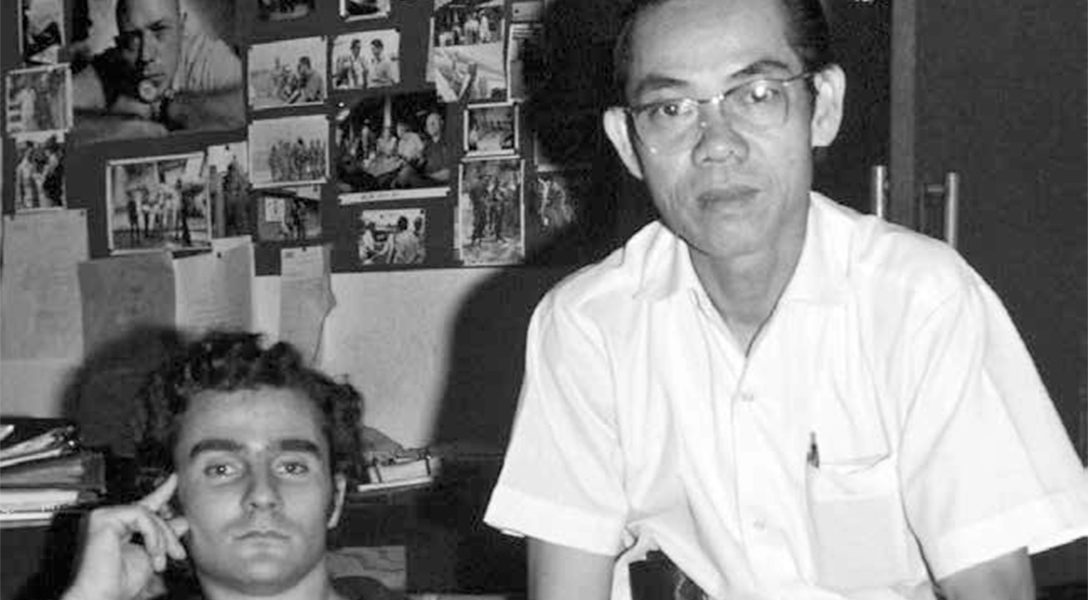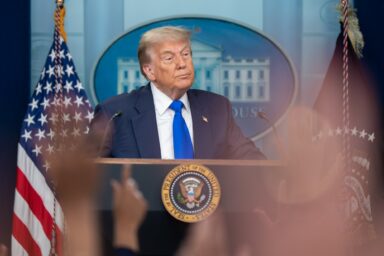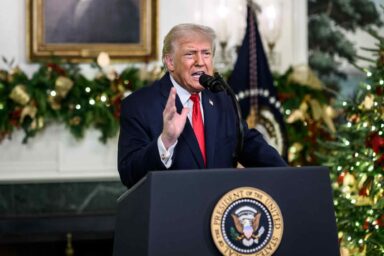The Captive and the Spy
Excerpt from ‘The Perfect Assignment: A Memoir of Journalism in the Golden Age’
A tale of intrigue during the Vietnam War that seems straight out of a Le Carré novel, but with a surprise ingredient — the stunning consequences of an act of kindness.
Jonathan Z. Larsen has led a remarkable life in journalism. Through a combination of luck and talent, he found himself repeatedly at the scene of great historical episodes.
Larsen began his journalism career at the West Hartford News while still at college. In 1963 he became a corporate trainee at Time Inc., the company his father had served as president for over 20 years. Larsen worked his way from a junior rewrite editor in New York to a general correspondent in the Time-Life News Service. In 1966 he was sent to Chicago, then two years later to Los Angeles as the magazine’s show-business reporter. In the fall of 1970 he was sent to Saigon as Time’s bureau chief. From there it was on to other news organizations, including serving as editor of the award-winning New Times magazine and editor in chief of the Village Voice.
Along the way, Larsen also cultivated and encouraged young journalists, including future WhoWhatWhy founder Russ Baker.
And now he has put together a memoir, The Perfect Assignment: A Memoir of Journalism in the Golden Age. We will be presenting multiple excerpts from this book. In it, you will find a welcome perspective on journalism back when people counted on — and trusted — the craft.
But you will also see astonishing details of how that craft was subverted to deceive the public, some of which may surprise even the most skeptical and knowledgeable among us.
[Note: Jonathan Larsen serves on the board of WhoWhatWhy’s nonprofit parent entity, Real News Project.]
Introduction by Russ Baker
Chapter 25 from The Perfect Assignment: A Memoir of Journalism in the Golden Age by Jonathan Z. Larsen (TidePool Press, Cambridge, MA, 2020)
The Captive and the Spy
“Any resemblance to what is written here and what is printed in Time Magazine is purely coincidental.” —Sign on the door of Time correspondent Teddy White
Two weeks before I flew off to Saigon, I picked up my morning paper to read that my friend Robert Sam Anson had been captured in a remote town in Cambodia north of Phnom Penh. His rented Ford Cortina had been discovered by the side of the road with all four of its tires shot out.
A few eyewitnesses came forward to say that Anson had been stopped at a military roadblock and had been led off, alive, by North Vietnamese soldiers. As the days ticked by, there was no further word, no additional sightings. Bob thus became the 23rd journalist missing in Cambodia, and the second from Time within the year. … There had been the usual calls for Bob’s immediate release, not just from the offices of Time Inc. but from the state department and from Father Hesburgh, the head of Notre Dame, with whom Anson, as a young student activist, had frequently sparred.
Ever since Bob had left Los Angeles for Vietnam, I had been tracking his career through the office grapevine as well as his published reportage. The youngest correspondent in the news bureau, he had arrived in Saigon the year before and soon wore out his welcome at the Time office with his fierce independence and outspoken opposition to the war, which only hardened when he had been sent to My Lai to cover the cold-blooded massacre of over 350 unarmed civilians by American soldiers.
After six months of almost constant bickering within the bureau, Marsh Clark, the bureau chief, and his second-in-command, Burton Pines, both ardent hawks on the war, had summarily exiled Bob to Cambodia. If they thought they were sending him to the journalist’s equivalent of Siberia they were badly mistaken.The sleepy backwater that had been Cambodia soon exploded in the spring of 1970 into a front page story after President Richard M. Nixon sent in US soldiers to clean out enemy sanctuaries.
Over his six months in Cambodia prior to his capture, Bob had amassed an impressive record of stories, some of them bearing rare internal bylines. His biggest coup had been the discovery of a massacre of ethnic Vietnamese in the town of Takeo. Tensions had become so high between Cambodians and ethnic Vietnamese shopkeepers and their families living in the country that Cambodia had begun setting up internment camps for their safety …
The newest of these camps at Takeo had become part of Anson’s morning ritual, as he and a Time stringer named T.D. Allman checked on the safety of those interned.
One morning they arrived to find a pile of machine-gunned bodies, buzzing with flies — more than 150 Vietnamese, including women and girls and some 30 boys under the age of eleven. Some of the victims were still alive, including a few of the children. Anson managed to rescue one severely wounded eight-year-old boy, driving him to the hospital and placing him in the care of French doctors. He then rallied other foreign journalists in Phnom Penh to return with him to Takeo as witnesses. Anson’s heroics that day had landed on the front page of the New York Times.
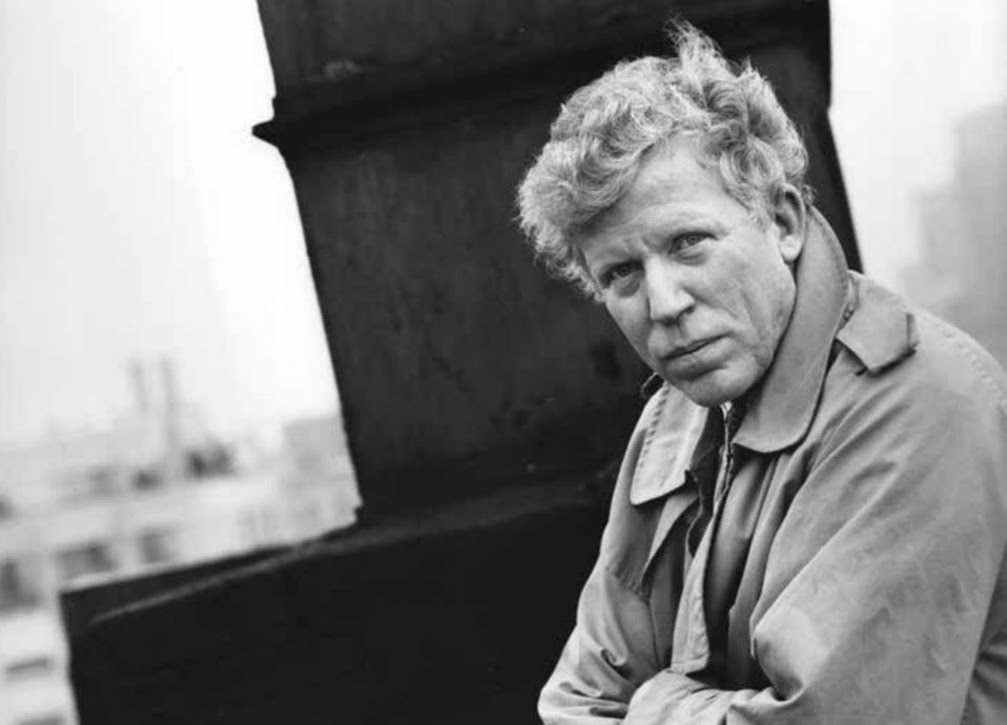
I had been in Saigon only a matter of days when word reached the bureau — miracle of miracles, Bob had somehow escaped after two weeks and had driven back alone into Phnom Penh, alone, in the same Ford Cortina, now with four good tires. He was fifteen pounds lighter but unharmed. Bob could not explain his good fortune, and neither could anyone else. His wife Diane left the children in the care of others and flew in from Singapore. …
Once the Ansons were safely settled in a hotel in Saigon, Gart [Murray Gart, chief of correspondents] announced that Time wanted Bob to write up a bylined, first-person account of his ordeal. It would be given a full two pages in the magazine. “Not a single comma would be changed without his permission,” Gart had promised. My role over the next few days was to offer support to my friend where needed.
I knew Bob to be not just an intrepid reporter but also a beautiful and facile writer, and over the next three days the words flowed easily, with many of the details of his captivity drawn directly from the diary entries he had made with small neat handwriting into three hard-cover journals. When I finally sat down to read his account, I was amazed that in his emaciated and sleep-deprived condition he had been able to produce at all, let alone something this good.
The editors in New York, while also pleased, turned out to have “issues.” What transpired next with Bob’s copy would serve as a harbinger of the manipulation that Time editors would put my own reporting through over the coming fourteen months, indeed the same sorts of manipulations that had distorted the magazine’s coverage of both China and Indochina since the late 1940s.
The rest of the story had been edited in such a way as to rob it of much of its detail, power, and news value. Not only the poem, but all references to B-52 strikes had been excised. Whom were we hiding information from? Certainly not our enemies. Other sections that seemed to the editors in New York to be politically sensitive had been neutered or cut altogether.
The first section the editors flagged was a poem Bob had written about the secret B-52 strikes that were still going on in Cambodia, strikes that frequently shook the very grounds where he was held captive. I had thought it one of the very best parts of his story and had encouraged him to keep it even as he sought to trim the story to the allotted space. The poem, in the manner of e. e. cummings with its odd structure and word divisions, was one of several poems he had written to pass the time:
A
Village Died
In Kam-
Puchea
Today
Nameless,
Faceless,
Like
A thousand
others
Houses,
Pigs,
Chickens,
Some Men
Women
Children
In
Saigon
The Briefer
Calls it
“A friendly Airstrike.”
And goes on
To the next
Item.
The first word that came clanking over the bureau’s telex was from Grunwald [Henry Grunwald, Time’s top editor]: The poem had to go. No reason was given. Perhaps Time objected to the crack about press briefers. There had been only two public affairs officials in Saigon from 1962 through 1968. …
Bob wrote back, insisting that the poem stay in. To break the impasse, Grunwald telexed that he would take the decision all the way to Hedley Donovan, the corporation’s editor-in-chief. It turned out that Hedley was off on a private yacht enjoying his summer vacation. Arrangements were made to bring a copy of Anson’s story down to dock where the yacht was tied. Hedley read it — no doubt along with a note from Grunwald pleading his position — and he too decided the poem had to go. As NFL officials like to say after reviewing a disputed play on the football field, the ruling on the field stands.
The rest of the story had been edited in such a way as to rob it of much of its detail, power, and news value. Not only the poem, but all references to B-52 strikes had been excised. Whom were we hiding information from? Certainly not our enemies. Other sections that seemed to the editors in New York to be politically sensitive had been neutered or cut altogether. In one passage, Bob had described how his captors had taken him outside to exercise in the cool evening air, and then, under the moonlight, had staged an exhibition.
Anson’s original text reads:
Sitting on a chair they had specially provided, I watched as some of the Vietnamese taught the Khmers how to crawl quietly through the grass, dragging their rifles behind them. The Vietnamese instructor, a soldier named Thua, moved as silently as a serpent, for twenty yards he slithered along, like a shadow moving across the grass, then, in one fluid motion, he pulled himself up on one knee, cocked his arm and flung an imaginary grenade into a mythical American position. One of the Khmers let out an appreciative whistle and dropped to the ground to try himself. Then the soldiers invited me to show them how Americans crawl. I got down on all fours and promptly split the seat of my pants. The evening solitude dissolved in howling laughter.
The italics are mine. They show the two crucial sentences about the sapper attack that editors cut from Anson’s narrative — in other words, the heart of the scene. What had been a chilling eyewitness account behind enemy lines — watching skilled sappers training to blow up an American firebase to the applause of their Khmer Rouge students — was now nothing more than a setup for the laugh line about the cultural divide symbolized by the split in Anson’s pants.
Bob laid the final manuscript alongside his original and invited me to read both. When I had finished reading Anson asked, “Is this what I think it is?”
“I am afraid so,” I answered.
It turns out that the strike Anson witnessed had been no cross-border accident or anomaly; rather it had been a glimpse into a military offensive Nixon and Henry Kissinger had devised in secret just months after Nixon’s inauguration.
After more back and forth with New York, Bob sat down at the telex machine and typed out the words, “I quit.” A day or two later, when I accompanied the Ansons to the airport to see them off, the issue of Bob’s resignation was still in the air. Everyone had agreed to a cooling off period, and it was clear that it remained Bob’s decision.
There were two postscripts to the story of Bob Anson’s captivity. The first cleared up the mystery of why Anson’s poem about a B-52 strike on a Cambodian village had caused such tremors in the Time-Life Building. It turns out that the strike Anson witnessed had been no cross-border accident or anomaly; rather it had been a glimpse into a military offensive Nixon and Henry Kissinger had devised in secret just months after Nixon’s inauguration.
At Kissinger’s orders the final minutes of the bombing sorties were directed by computers from nearby radar sites, with the pilots believing they were still flying over Vietnam. After the fact, the authentic records were destroyed and fake records substituted in their place to rationalize the missions.
In order to destroy North Vietnamese sanctuaries in Cambodia, the president and his national security advisor had ordered up a massive illegal bombing campaign against a neutral country. Before it was over, B-52s had dropped, according to one account, “nearly one-fifth the tonnage dropped by U.S. forces in the Pacific Theater during all of World War II.”
Almost no one knew of this: not the Air Force generals, not Congress, not even the pilots. At Kissinger’s orders the final minutes of the bombing sorties were directed by computers from nearby radar sites, with the pilots believing they were still flying over Vietnam. After the fact, the authentic records were destroyed and fake records substituted in their place to rationalize the missions.
Publishing Bob’s poem in Time might have finally exposed the campaign that had been going on for well over a year. The first news reports would take another five years to surface. The full story was recently told in all of its perfidious minutiae in Robert Brigham’s Reckless: Henry Kissinger and the Tragedy of Vietnam. If only one could reconstruct that phone call between the top management of Time and … the Pentagon? The White House? Kissinger himself?
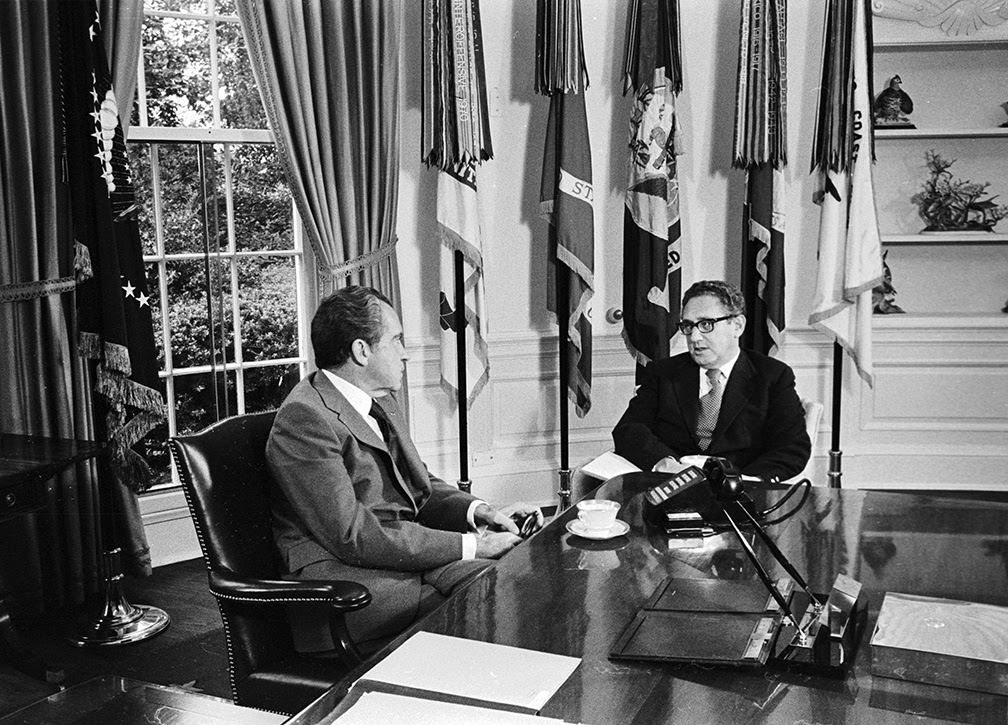
The second postscript to Anson’s story would come 18 years later. Over that entire span, no one had been able to figure out the answer to this simple question: How had Bob Anson escaped the death that seemed to be the fate of so many journalists captured behind enemy lines. The answer had been hiding in plain sight in Time’s Saigon office.
The moment that Bob’s wife Diane heard that her husband had been captured and was missing, she flew into Saigon from Singapore, along with her two-and-half-year-old daughter and her fifteen-month-old son, my godson. With children in tow, Diane went straight to the Time-Life office to enlist the aid of the bureau’s impossibly well-informed and well-connected Vietnamese reporter, Pham Xuan An.
An and Bob Anson had become friends soon after the junior reporter had arrived in town. While going through his emotional battle of wills and ideology with his bureau chief, Bob had written up a letter of resignation. Over a cup of coffee, he had shown the letter to An, seeking his advice. Before they parted Bob had torn up his letter.
Now, An felt responsible for Bob’s fate. Had he not talked Bob into remaining in Indochina, the young American would be back home, safe, with his wife and two young children. Determined to save Bob’s life, he decided to employ the full force of his role — not as a Time reporter but as Agent Z.21, a full colonel in the North Vietnamese Army. An was not only a spy but had been one of the principal planners of the 1968 Tet attack on Saigon. He had lived on the razor’s edge of these two identities for decades — with a suicide pill always at the ready. What happened next is described by Larry Berman in Perfect Spy: The Incredible Double Life of Pham Xuan An.
That night, he went through his usual routine. He placed a few grains of rice and some water in a spoon and heated it over a flame, then dipped his pen into the liquid and began writing on plain wrapping paper. As he wrote, the words remained visible for a few moments, then magically disappeared.
Berman had conducted many interviews with An after his identity had been revealed and pieced together an account straight out of a Le Carré novel. As luck would have it, the day after Diane Anson’s visit, An happened to have a prearranged “drop” with his courier — an elderly Vietnamese woman who chewed betel nuts and sold spring rolls.
That night, he went through his usual routine. He placed a few grains of rice and some water in a spoon and heated it over a flame, then dipped his pen into the liquid and began writing on plain wrapping paper. As he wrote, the words remained visible for a few moments, then magically disappeared.
Hanoi had been expecting a detailed analysis of Nixon’s Cambodian incursion. Instead, as Berman tells it, An sent only one message along with some canisters of film: If Bob Anson was not already dead, he should be set free. An explained that the American journalist the North Vietnamese soldiers were holding was a friend to the Vietnamese people and someone who had saved the lives of Vietnamese children.
Those were freighted words. Many Vietnamese believe that the saving of even one child’s life creates a blood debt. Pham Xuan An’s courier carried his message into a complex of tunnels outside of Saigon, where intelligence agents lifted off the layer of spring rolls to reveal canisters of film and An’s message. A solution of iodine transformed the plain wrapping paper back into a legible message; An’s coded words were then sent through radio transmission on to Hanoi.
From Hanoi, the plea to save Bob Anson now had to work its way back through coded channels until it finally reached the North Vietnamese who were holding him in Cambodia. By sending his message of mercy instead of the analysis that Hanoi had been expecting, in effect “wasting” an elaborate drop to save a friend rather than provide intelligence, An had risked his own life. It was one of those instances of surpassing grace that seem to attach to war.
Next installment: Soldiers on Drugs
Related front page panorama photo credit: Adapted by WhoWhatWhy from Air Force Medical Service / (CC0)
